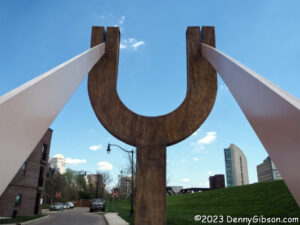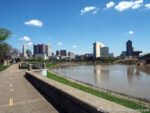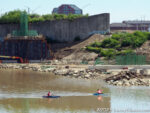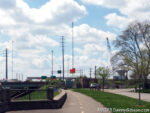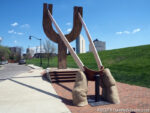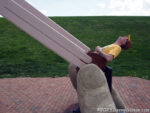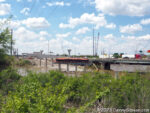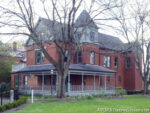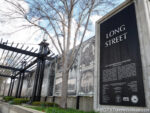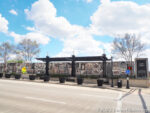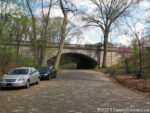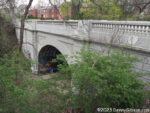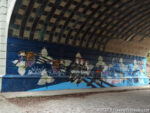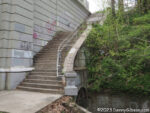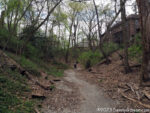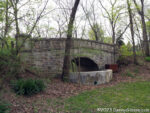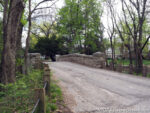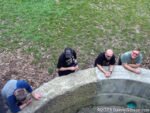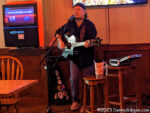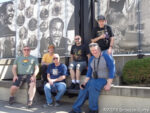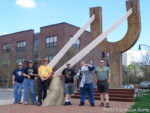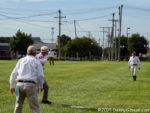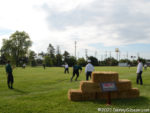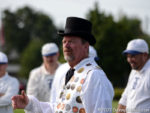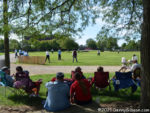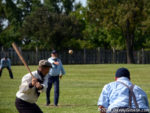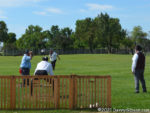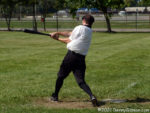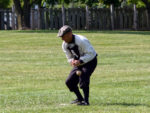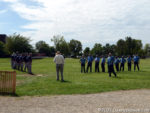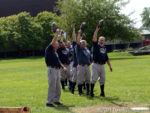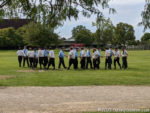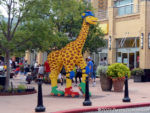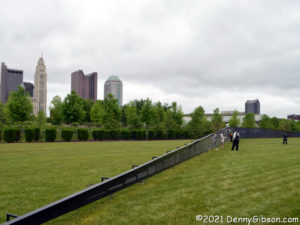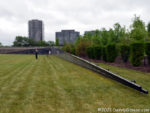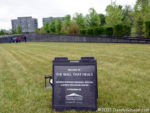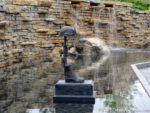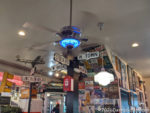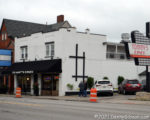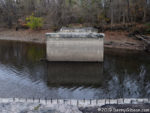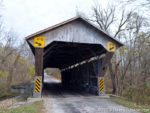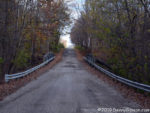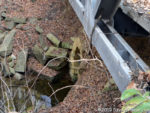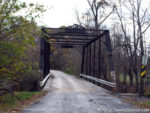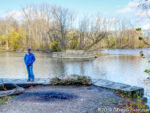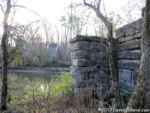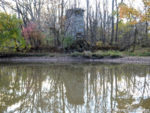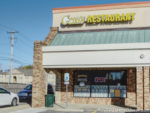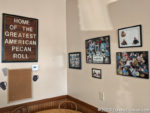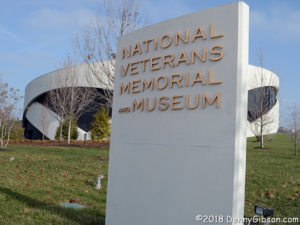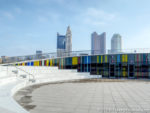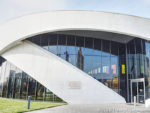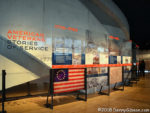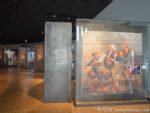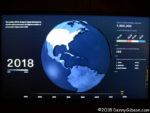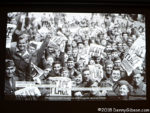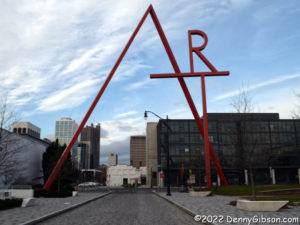 I drove to Columbus on Wednesday to immerse myself in Vincent Van Gogh. You might be aware that Van Gogh: The Immersive Experience will be opening in Cincinnati in June. If so, I’d expect you to ask, “Why not wait? It’s the same thing isn’t it?” Well, no. No, it’s not.
I drove to Columbus on Wednesday to immerse myself in Vincent Van Gogh. You might be aware that Van Gogh: The Immersive Experience will be opening in Cincinnati in June. If so, I’d expect you to ask, “Why not wait? It’s the same thing isn’t it?” Well, no. No, it’s not.
There are currently five different digital Van Gogh exhibits touring the United States and triggering a flurry of bad puns. The one I saw in Columbus is Immersive Van Gogh. It is also currently in Cleveland. The one in Indianapolis at present is called Van Gogh Alive. Beyond Indianapolis, Beyond Van Gogh: An Immersive Experience is playing in St. Louis. All four of these have appeared or will appear in several cities other than the ones I’ve mentioned. The fifth exhibit, Imagine Van Gogh: The Immersive Exhibition just opened in Boston and will open in Seattle in March. Those two cities are the only stops currently planned for that exhibit. AFAR has a rundown on all five here.
So which is best? Having seen only one, I have no idea. I went to Columbus for a couple of reasons. One is that I didn’t want to wait. Another is that I’d read a very positive report from a friend I haven’t met. It’s here. She immediately followed her Immersive Van Gogh experience by taking in a related display at the Columbus Museum of Art. That’s described here. I decided I should do that too although, because of ticket availability, I visited the two exhibits in the opposite order.
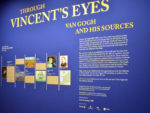
The picture at the top of this article is of the big ART sculpture near the Columbus Museum of Art. The picture at left is at the entrance to the Through Vincent’s Eyes: Van Gogh and His Sources exhibit inside the museum. The title comes from the more than 100 works from artists that Van Gogh admired and was influenced by. These include Paul Gauguin, Claude Monet, and many others. For me, however, the real draw of the exhibit was the seventeen pieces by Van Gogh himself.


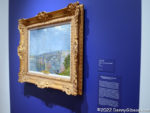
I am neither an art connoisseur nor an art historian. I don’t doubt that there are several pieces in the exhibit that are more significant, but these three caught my eye for one reason or another. Bridge across the Seine at Asnieres caught my eye at least partially because it was both different from images I’d previously associated with Van Gogh and similar to images I’ve frequently captured myself with a camera. The bright gold of Wheat Field seemed even more different from the admittedly limited set of Van Gogh images that set my expectations. Neither of these paintings contains people and I think I’d really come to expect people in Van Gogh’s work. Undergrowth with Two Figures, which obviously does contain people, caught my eye through its reproduction in a jigsaw puzzle that passing visitors worked on now and then.
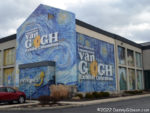
From the museum, I headed a few miles north to the Immersive Van Gogh Experience at Lighthouse ArtSpace. The exhibit opened on October 28 and was originally scheduled to close on January 2. It was sufficiently popular, however, to trigger an extension to February 27.
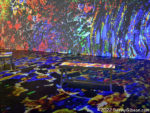

The 60,000 frames of video appear primarily on the walls but sometimes spill onto the floor and other horizontal surfaces. The giant images are far from static. For example, the purple irises slowly pop onto the green grass background until it is nearly covered and they are almost always in motion.
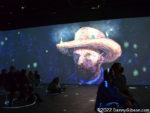
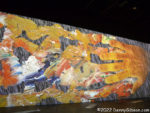
Neither proof of COVID vaccination nor a negative test is required for admission but a mask must be worn at all times. Circles are projected onto the floor to aid in social distancing. I had expected all of these to be “unfurnished” and many were but more than half contained a simple bench. I had anticipated sitting on the floor but was happy to see the benches. For those of us of a certain age, rising from a bench is much much easier than rising from a floor. Cushions, with a Van Gogh sunflower, are included in VIP ticket packages, and I believe they can be rented. I made do with self cushioning.
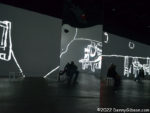

The space is basically open but it is large and there are a few pillars. They are covered with a mirror-like surface that avoids blank spots while adding some interesting variations of its own. I doubt you would have guessed and may not find it even after being told it’s there, but one of these pictures contains a funhouse-mirror-style selfie.
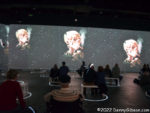
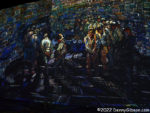

I suppose these are the sorts of images my mind tended to associate with Van Gogh in the past. I enjoyed seeing them but probably benefited more from being reminded that he produced some bright and pleasant images too.
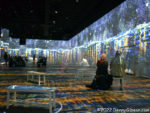
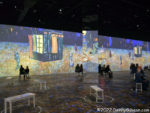
These photos were taken with an exposure that makes the exhibit area look quite a bit brighter than it ever really appeared in person. Hopefully, they provide an idea of just how big the area was and how it was laid out.
 Wow! The immersive exhibit was wild and entertaining. The original music was splendid and added considerably to the experience. At the end of the day, however, I think I liked the Van Gogh and His Sources exhibit more. The sequence that I saw them in could have something to do with that but I don’t think so. At Lighthouse ArtSpace, it was the presentation and the machinery behind it that held my attention. At the museum, my attention was pulled in by Van Gogh’s actual product and, on occasion, the stories behind it. Both exhibits were well worthwhile, and they do complement each other. It even kind of makes sense, perhaps, to end the day’s doubleheader looking at the eyes that I started the day by trying to look through.
Wow! The immersive exhibit was wild and entertaining. The original music was splendid and added considerably to the experience. At the end of the day, however, I think I liked the Van Gogh and His Sources exhibit more. The sequence that I saw them in could have something to do with that but I don’t think so. At Lighthouse ArtSpace, it was the presentation and the machinery behind it that held my attention. At the museum, my attention was pulled in by Van Gogh’s actual product and, on occasion, the stories behind it. Both exhibits were well worthwhile, and they do complement each other. It even kind of makes sense, perhaps, to end the day’s doubleheader looking at the eyes that I started the day by trying to look through.
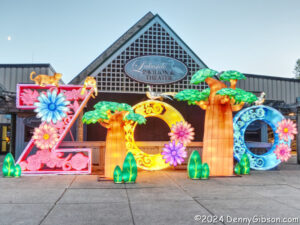 Although I had heard of lantern displays, I had never attended one so Thursday’s experience was a completely new one for me. Apparently, the event is also something new for the Columbus Zoo but they had more than a month’s experience with it before I got there. The Columbus Zoo Lantern Festival opened on August 1 and will run through September 29.
Although I had heard of lantern displays, I had never attended one so Thursday’s experience was a completely new one for me. Apparently, the event is also something new for the Columbus Zoo but they had more than a month’s experience with it before I got there. The Columbus Zoo Lantern Festival opened on August 1 and will run through September 29.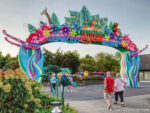
 It opens at 7:00 while the sun is still shining and remains open until 10:00 long after the sun has set. I initially thought that was much more time than was reasonably required but realized that the lanterns essentially fill the entire zoo. And it’s a really big zoo.
It opens at 7:00 while the sun is still shining and remains open until 10:00 long after the sun has set. I initially thought that was much more time than was reasonably required but realized that the lanterns essentially fill the entire zoo. And it’s a really big zoo.

 I probably saw less than a third of the lanterns in full sunlight.
I probably saw less than a third of the lanterns in full sunlight. 

 Then I revisited some of those and took in the remainder as things got darker.
Then I revisited some of those and took in the remainder as things got darker.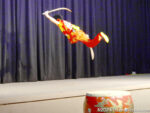
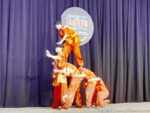
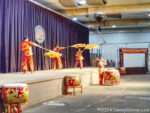 In between my light and dark walks, I took in one of the two shows that are offered. These photos are from the Martial Arts show. The other show, which I did not see, is Shadow Puppets.
In between my light and dark walks, I took in one of the two shows that are offered. These photos are from the Martial Arts show. The other show, which I did not see, is Shadow Puppets.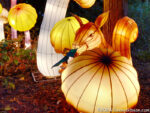

 Of course, darkness and lanterns really do go together.
Of course, darkness and lanterns really do go together.
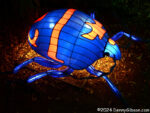
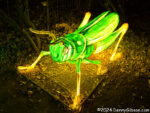 Many lanterns represent living creatures and some are close enough to scale to be considered lifesize. That is decidedly not the case with this group.
Many lanterns represent living creatures and some are close enough to scale to be considered lifesize. That is decidedly not the case with this group.

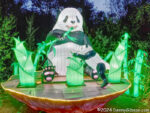 When I searched for this event, I called it a Chinese Lantern Festival and many of the lanterns displayed in Columbus match some shown on a website with that name. The Columbus event, however, mostly, but not entirely, avoids the word Chinese. Perhaps that is because the zoo and the lanterns are organized to represent all the different areas of the globe. Of course, that means there is a section that does represent China.
When I searched for this event, I called it a Chinese Lantern Festival and many of the lanterns displayed in Columbus match some shown on a website with that name. The Columbus event, however, mostly, but not entirely, avoids the word Chinese. Perhaps that is because the zoo and the lanterns are organized to represent all the different areas of the globe. Of course, that means there is a section that does represent China.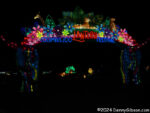 Admission includes unlimited rides which was wasted on me although I did briefly consider taking a few laps on the historic carousel. And there are bunches of lanterns not pictured here. The Columbus Zoo Lantern Festival is open tonight and there are two more weeks of Thursday through Sunday operation.
Admission includes unlimited rides which was wasted on me although I did briefly consider taking a few laps on the historic carousel. And there are bunches of lanterns not pictured here. The Columbus Zoo Lantern Festival is open tonight and there are two more weeks of Thursday through Sunday operation.
